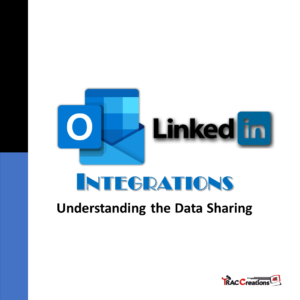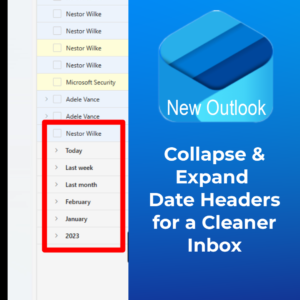Are Outlook Read Receipts a helpful tool or an invasion of privacy? In this article, we break down real-world workplace scenarios where Read Receipts support communication—and where they can damage trust. You’ll also learn when a Delivery Receipt might be the better choice, all through the lens of the TRACCreations4e 4E Methodology. In addition, we will address sender and recipient common questions.
Explore the Tension Between Transparency and Trust with Outlook Read Receipt
We’ve all been there: You send a high-priority email—maybe it’s a last-minute meeting change, a critical client update, or a document approval—and then… nothing.
No reply and no reaction.
The question creeps in: Did they even open it?
Outlook gives us a tool for this very moment: Request Read Receipt. When enabled, the sender gets a notification when the recipient opens—or deletes—the email. On paper, this sounds helpful. But in practice? That depends on the person, the context, and your company culture.
Let’s be real:
- Some professionals love the transparency.
- Others feel like they’re being watched.
And here’s the part many don’t realize: Outlook also offers a separate option—Request Delivery Receipt—which simply tells you the message made it to the recipient’s inbox. No privacy concerns. No pop-ups or clicking involved.
So why do we still rely so heavily on Read Receipts?
Experiment with Resources
How Do Read Receipts Work?
Read Receipts are a tracking feature in Outlook that sends a notification back to the sender when the recipient opens a message. The key word here is “opened”—not necessarily “read.” In many cases, recipients are given a choice to send or decline the receipt. In some organizations, the response is sent automatically, or blocked altogether by policy.
Interestingly, if the recipient deletes the message without opening it, the sender may receive a notification such as “This message was deleted without being read.” This lets the sender know that the email was not viewed, offering a different confirmation.
How Do I Know If an Email Has Been Read?
Unless the recipient sends a Read Receipt (either manually or automatically), there’s no guaranteed way to know whether an email has been read. For higher assurance, you can use Delivery Receipts to confirm delivery, or simply follow up using Teams, chat, or a follow-up email.
Corporate Use Cases—Helpful and Harmful Request Read Receipts
Let’s unpack how this feature shows up in the real world—with all its nuance.
Why Do People Request Read Receipts?
People request Read Receipts for a few reasons:
- Confirmation that their message has reached its intended audience.
- Peace of mind in time-sensitive situations.
- Accountability, especially in legal or compliance contexts.
- Follow-up planning in distributed or global teams.
Example:
A compliance officer sends an updated vendor form to all contractors. With Read Receipts, she can follow up only with those who haven’t opened the email—saving time and reducing back-and-forth.
When Read Receipts Are Genuinely Helpful
- Legal or HR Documentation: When you need to show proof that someone received and saw a formal notice—such as a policy update or deadline.
- Client Contracts or Approvals: Project managers and account reps may use read receipts to ensure clients opened time-sensitive materials before a deadline.
- Cross-Time Zone Teams: If you’re managing global teams, a read receipt can confirm someone at least saw your message—helping you plan without requiring a reply.
When Read Receipts Cross the Line
- Manager-to-Employee Oversight: Some employees feel micromanaged when supervisors track every opened email—especially if it’s paired with follow-up questions like, “I saw you opened this—why no response yet?”
- Client Relationships: Automatically triggering read receipts with clients can feel intrusive, especially if the email content is informal or non-critical.
- False Expectations: Just because an email was opened doesn’t mean it was read with understanding. People may click, skim, and move on—especially from a mobile device.
Example:
An employee accidentally opens an FYI email late at night. The sender gets an instant read receipt and assumes the message was reviewed—leading to miscommunication the next day.
Execute with Confidence
Know When to Use (and Not Use) Outlook Read Receipts
It’s important to evaluate whether a Read Receipt is truly necessary before enabling it. Not every email warrants that level of tracking.
Instead, ask yourself:
- Is it mission-critical that I know the recipient opened this?
- Will a Delivery Receipt (which confirms the message arrived) be enough?
- Could a follow-up message or Teams ping be more appropriate?
🔁 Smart Alternatives:
- Use Delivery Receipts to confirm delivery without crossing privacy lines.
- Rely on email tracking in CRM tools for external communications.
- Use Outlook Follow-Up Flags and @Mentions to drive response instead of relying on receipts.
How to Turn On Read Receipt
After understanding when it’s appropriate to use the feature, here’s how to enable it manually in Outlook:
Note: In New Outlook, there is currently no option to enable Read Receipts by default for all messages (unlike in Classic Outlook).
To enable Read Receipt for a single message:
- Compose a new email message.
- In the ribbon, go to Options.
- Select Request a Read Receipt under Tracking.
⚠️ You cannot enable Read Receipt after an email has been sent. Plan ahead if you need confirmation.
Effectively Reap the Benefits for Outlook Read Receipts
Here’s the truth: Read Receipts aren’t inherently good or bad. They’re just a tool. It’s how you use them—and when—that makes all the difference.
✅ Used thoughtfully, they can reduce anxiety, improve accountability, and streamline workflows.
❌ Used excessively, they can damage trust, create confusion, or feel invasive.
If your workplace values transparency and documentation, set expectations clearly. If privacy is a concern, consider using Delivery Receipts or simply letting go of the need to know.
When in doubt? Communicate directly. No receipt can replace a real conversation.
Now, go and work your magic.
Your Turn—Let’s Talk About It
- Do you use Read Receipts in Outlook—or avoid them altogether?
- Do you find them helpful in your workflow or feel they cross a line?
Drop your thoughts in the comments below.
Let’s compare perspectives across corporate and personal settings. Better communication starts with thoughtful tools, let’s learn from each other.



